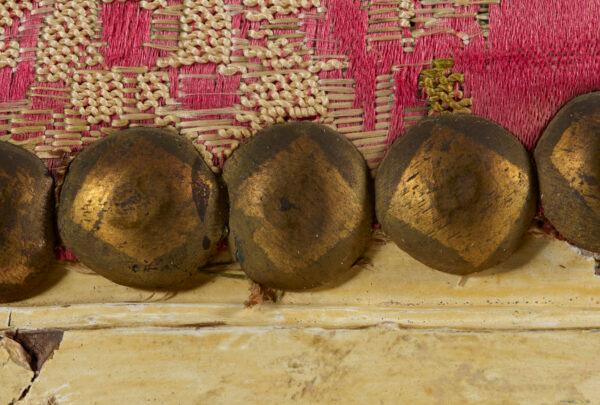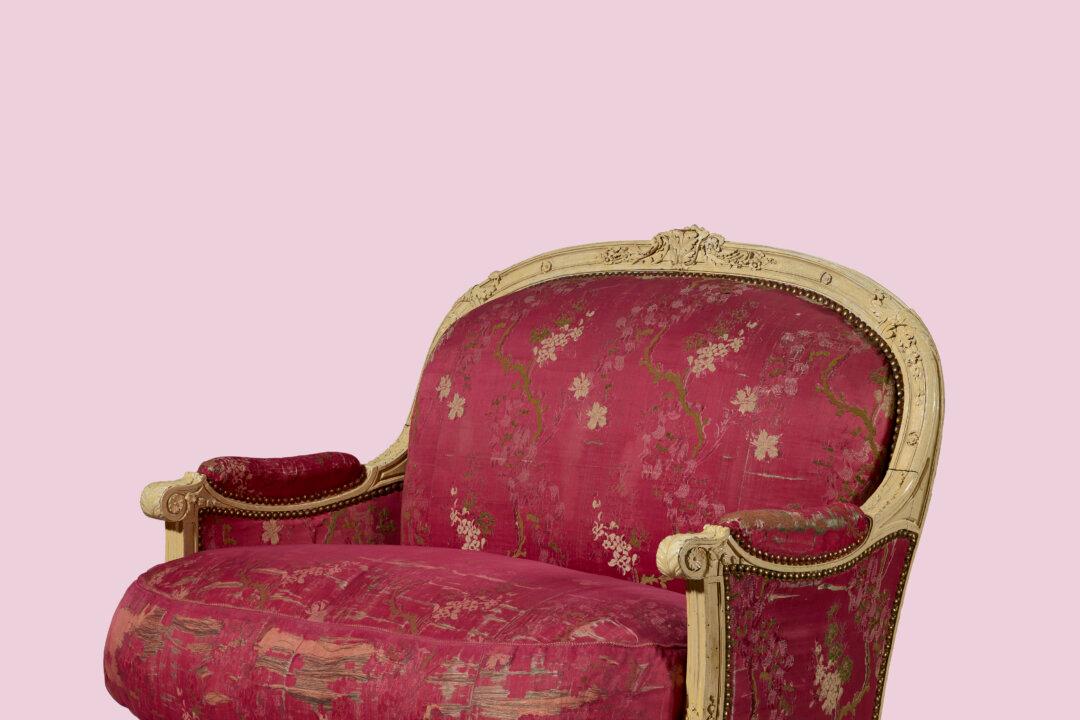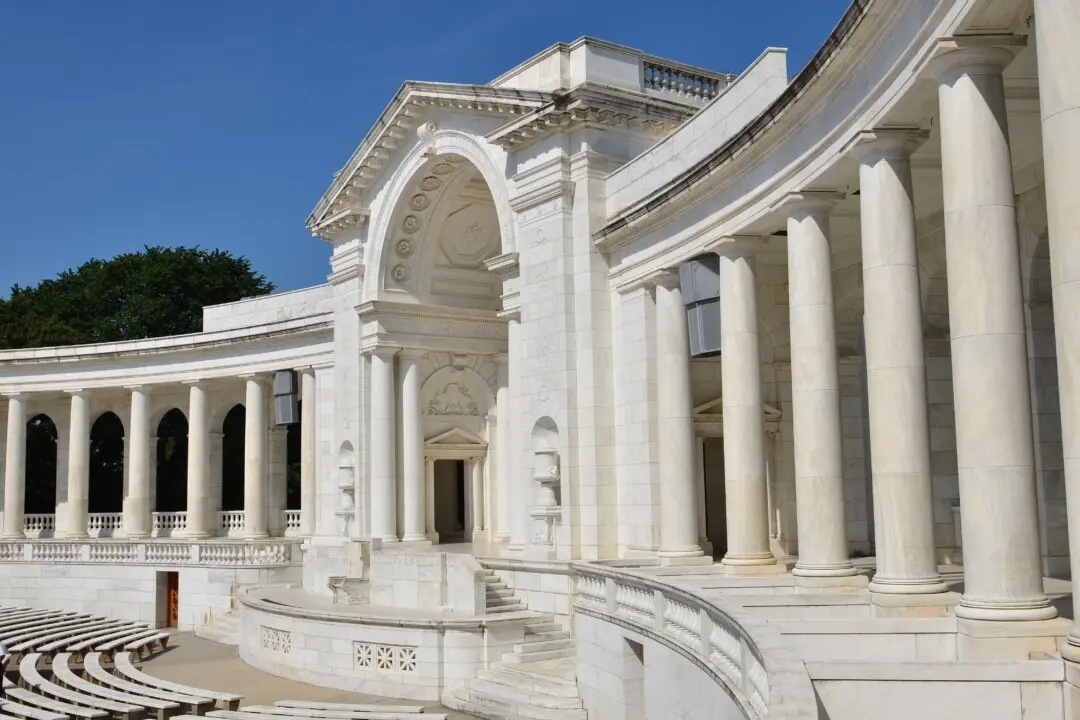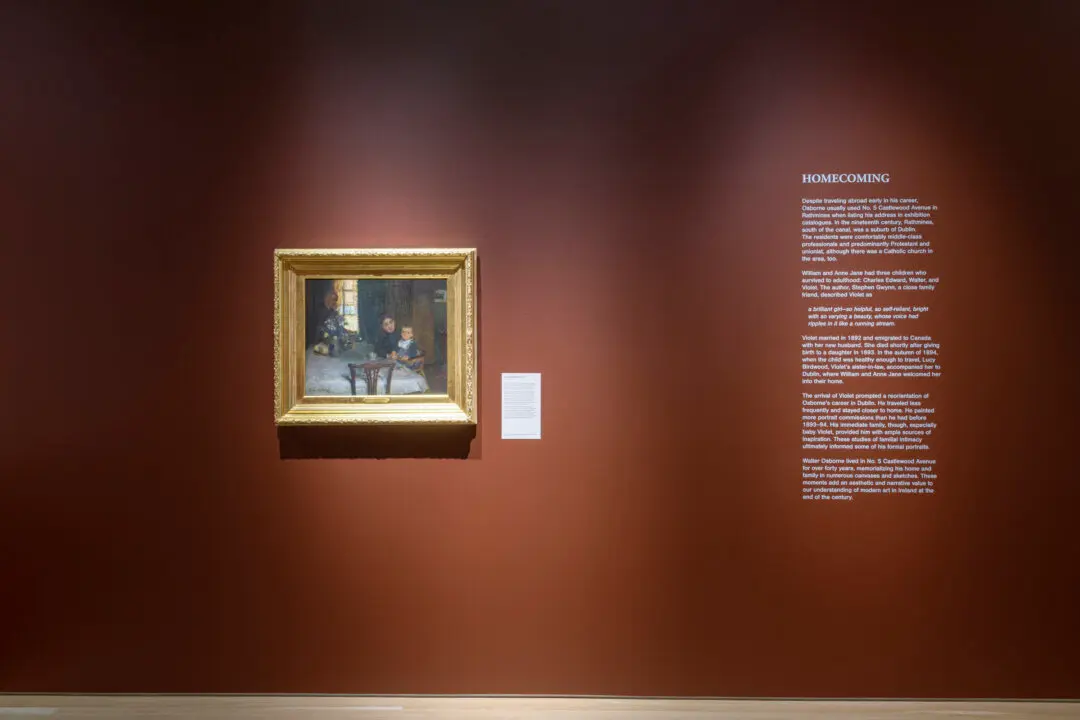Even from afar, an astonishing 18th-century Parisian armchair evokes a sense of majesty and comfortable rest. The rare, sumptuous, crimson-colored brocade-silk armchair, with its seat generously stuffed with swan- and goose-down feathers entices one to rest in its luxury. Even the brass upholstery nails are covered in squares of gold leaf.

Detail of the armchair (Bergère), 1770–72 or early 1780s, French, by Georges Jacob. Walnut, painted and varnished, and beech; silk, linen, hemp, and horsehair upholstery with swan- and goose-down feather stuffing; silk trim; iron tacks and gilt-brass nails. 3 feet 3 inches high by 3 feet 1 inch wide by 2 feet 6 inches deep. The J. Paul Getty Museum. The J. Paul Getty Museum






